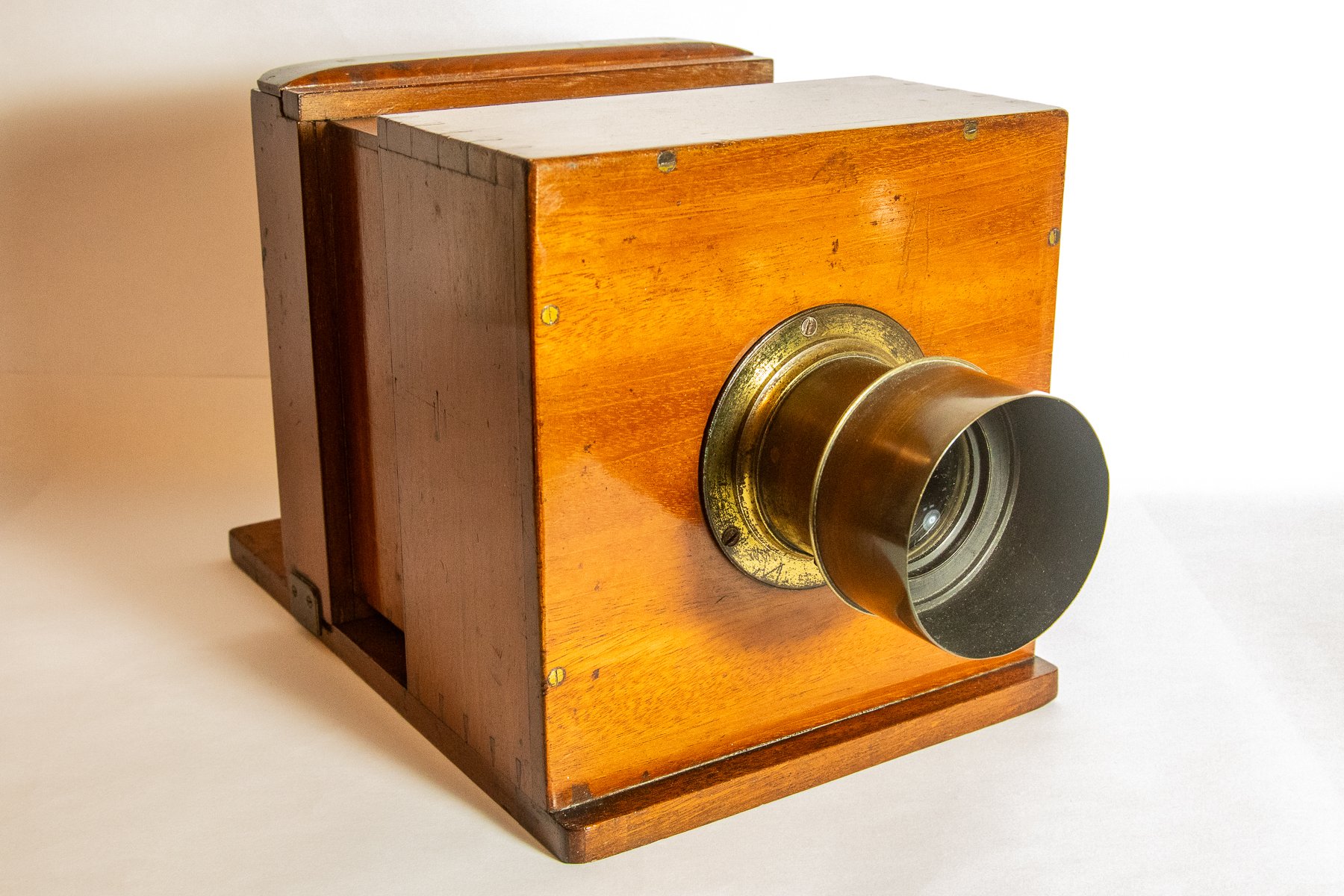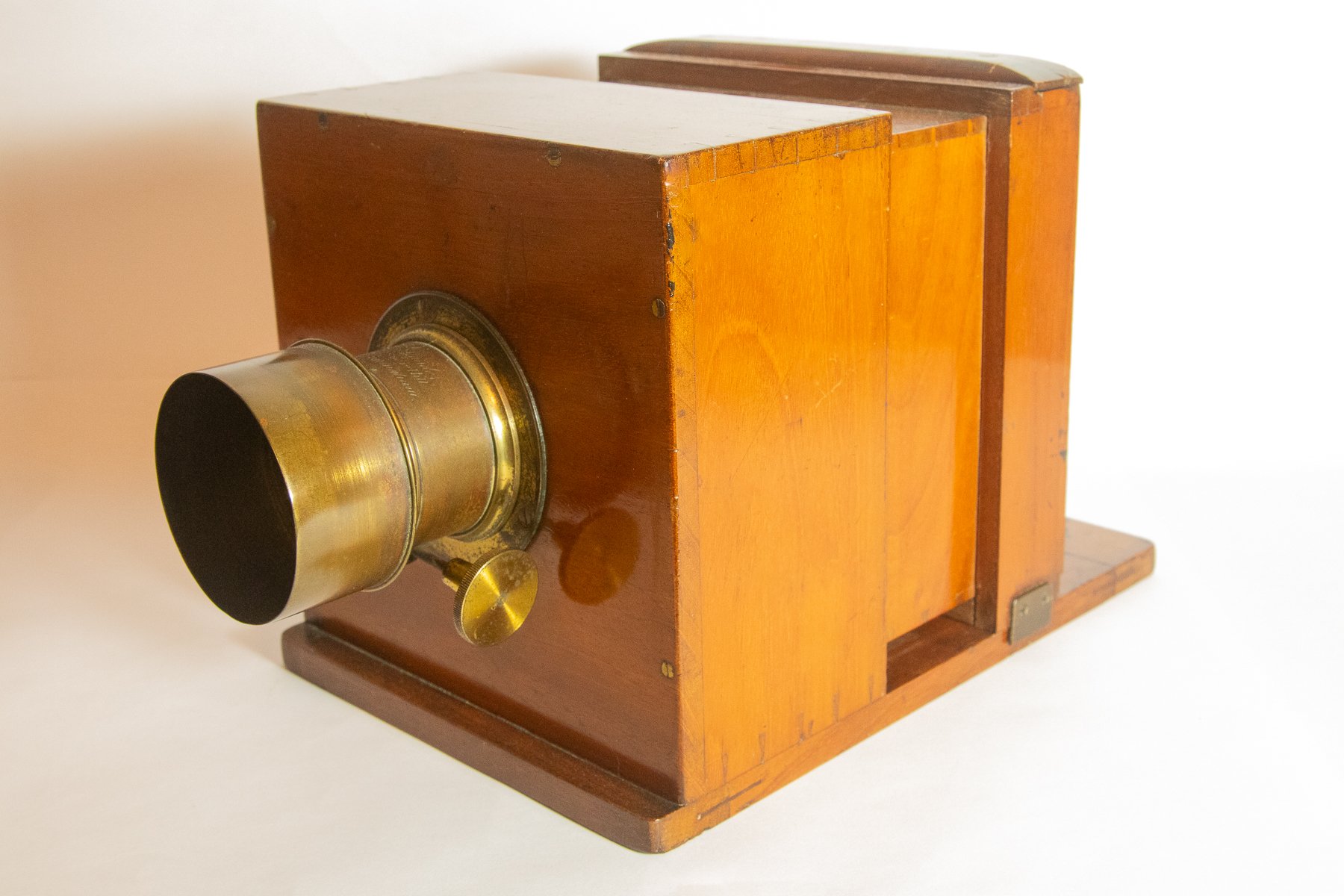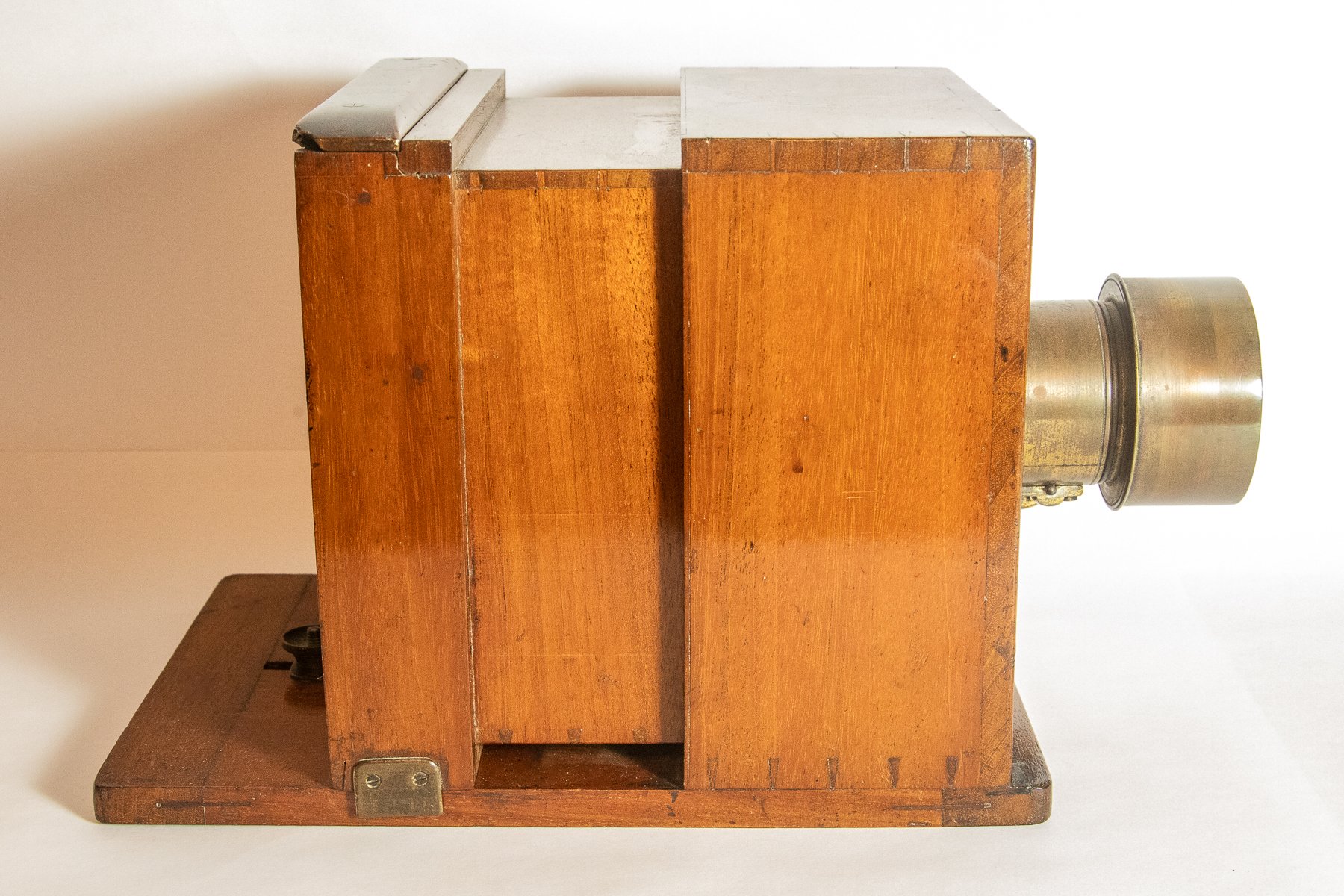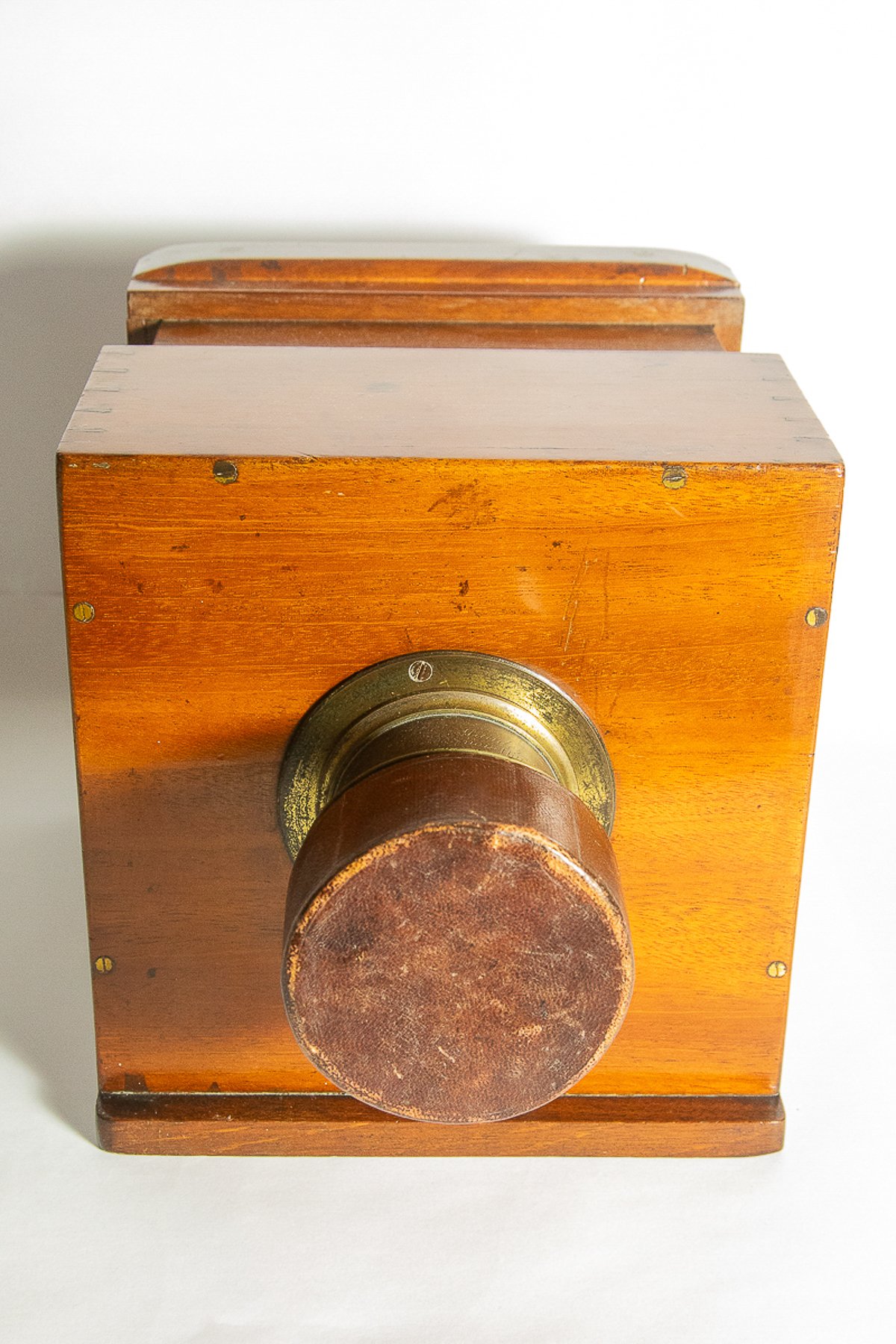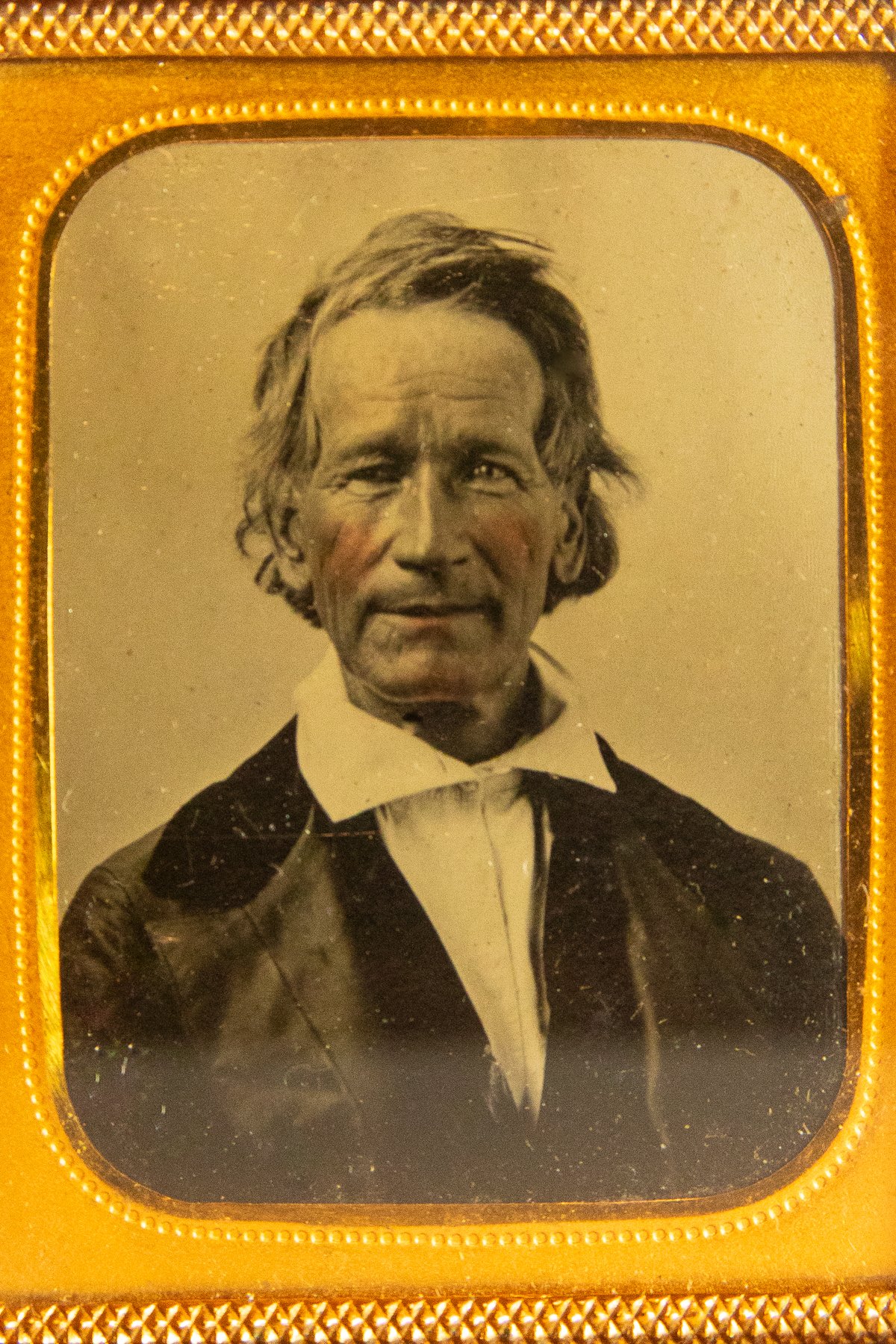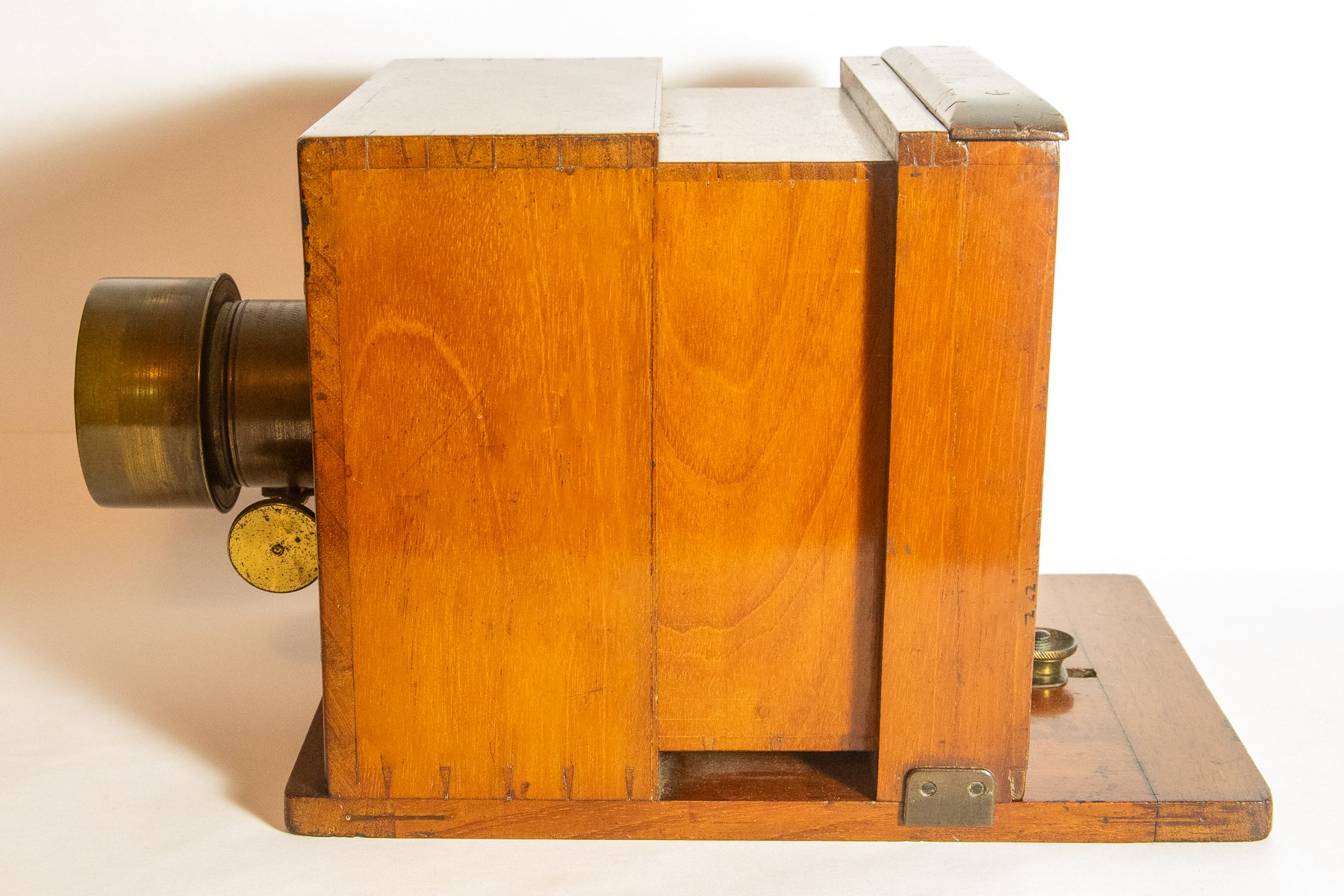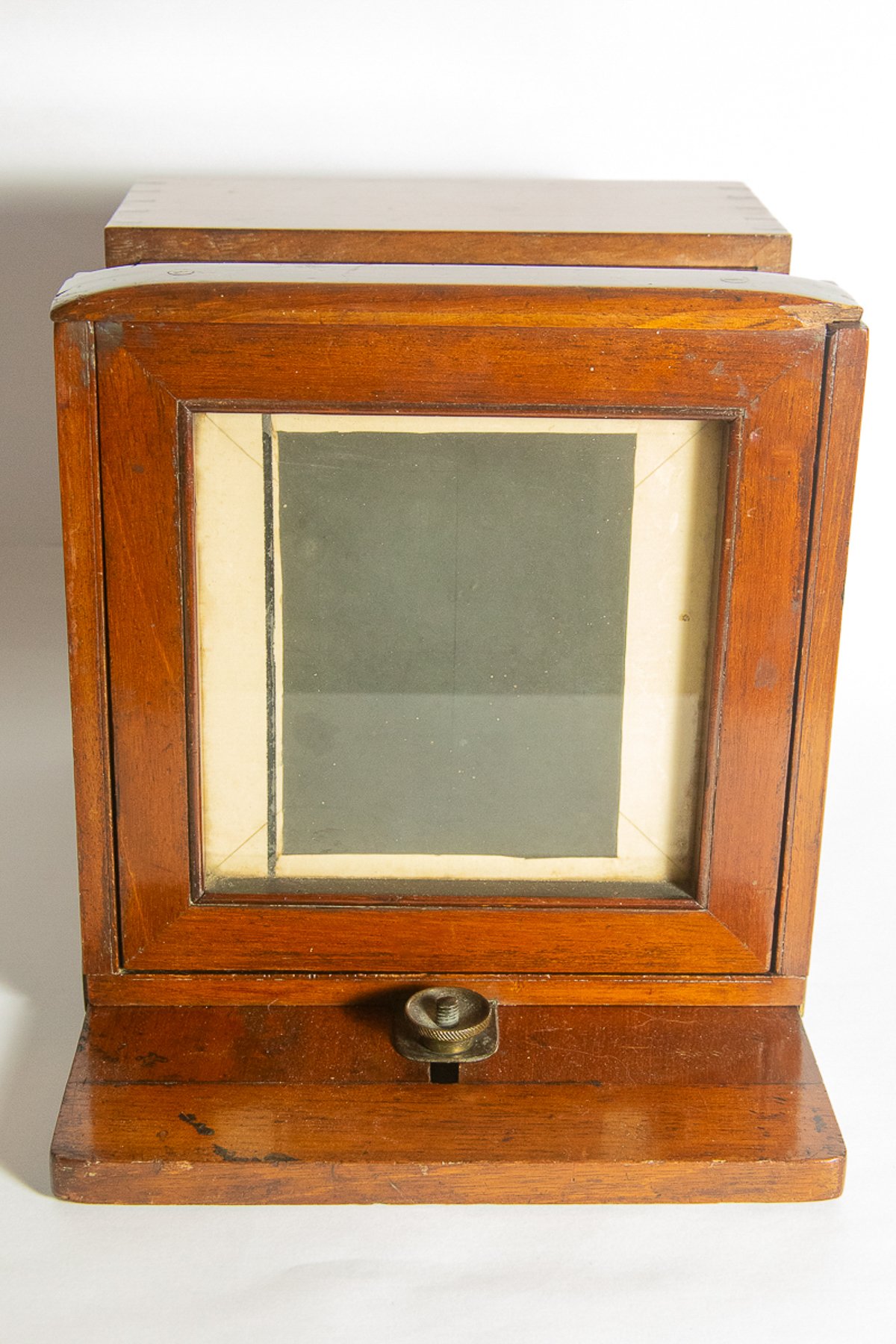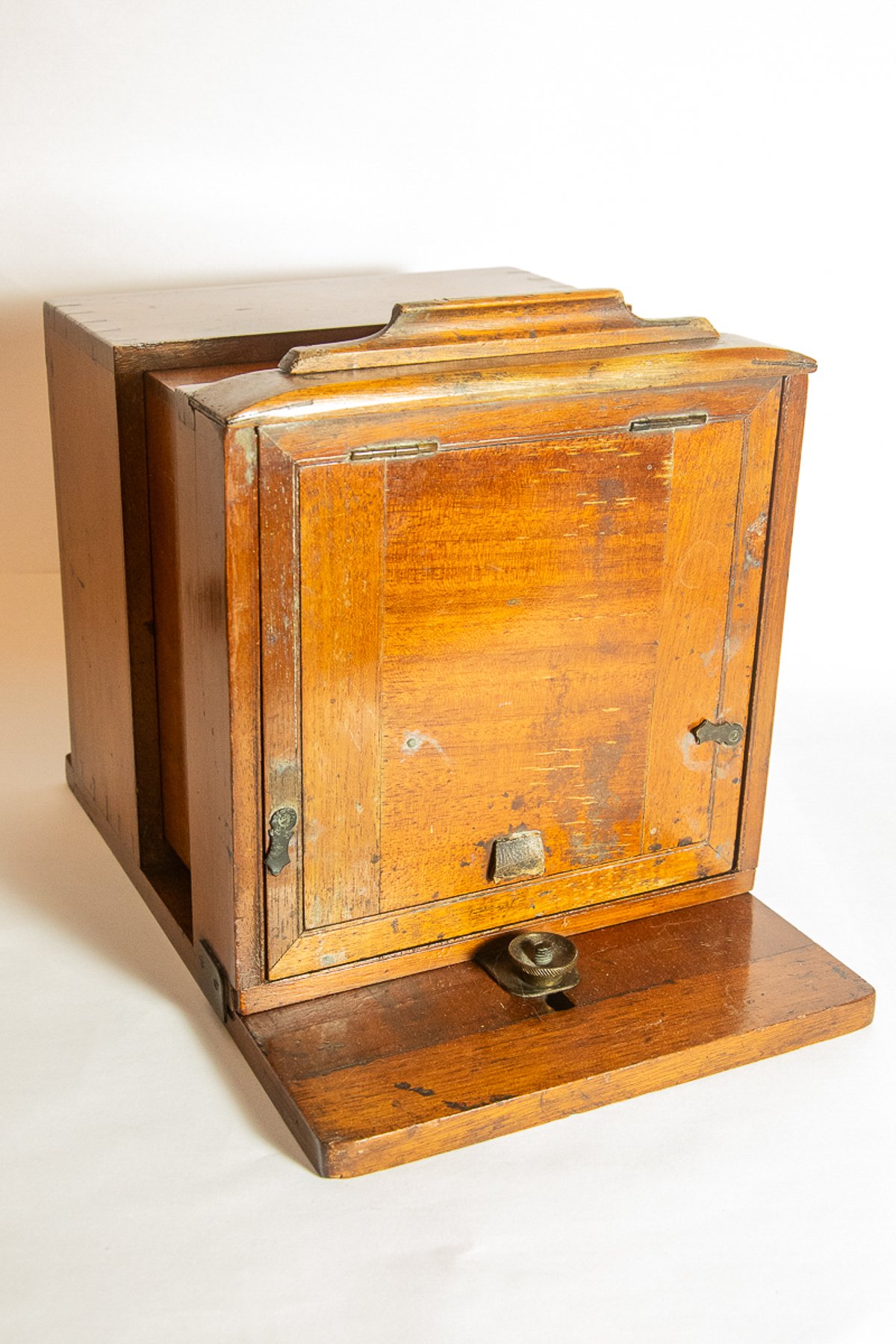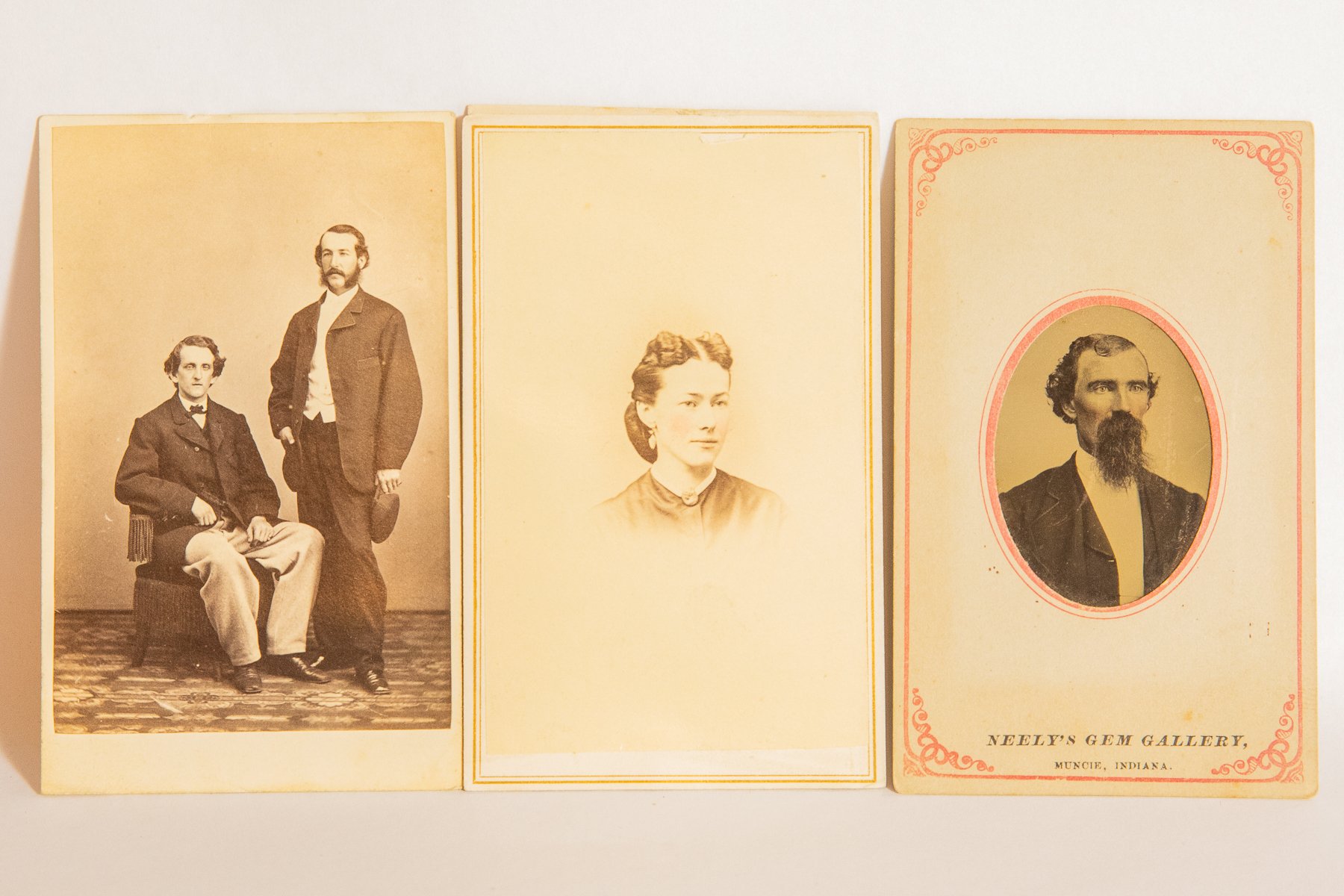Sliding Box Wet Plate Camera
England
ca. Mid-1850s
Of the cameras in my collection, this English sliding box wet plate camera strikes a chord in me more than many others. It is among the oldest cameras that I own (circa 1850s), and the identity of the maker is unknown. The sliding box construction was the earliest style of camera, reminiscent of those used for Daguerreotypes and camera obscuras. It took quarter-plate photographs and utilized ground glass focusing. The polished wood (possibly walnut or elm) has dovetail joints.
According to Scott’s Photographic Collection, the procedure was as follows: After composing and focusing, the photographer places a cap over the lens, removes the ground glass panel and inserts the plate holder in its place. In the plate holder there is a cover called a dark slide that protects the photographic plate from extraneous light. The dark slide is removable or retractable, and it is withdrawn prior to making the exposure. The exposure begins when the photographer removes the lens cap. After the required number of seconds have elapsed the lens cap is placed back over the lens. Finally the dark slide is replaced and the holder removed and taken to a dark room or tent to process the plate, thereby rendering a negative from which prints could be made.
While the camera itself has no maker’s mark, which is not uncommon for cameras of this era, the brass rack and pinion lens is marked E. Mander, 98 Snow Hill, Birmingham (England). The literature suggests that the lens was made by Ferdinand Colas, a Frenchman who worked in England from the 1840s. In England Colas lenses were sold by Elisha Mander.
